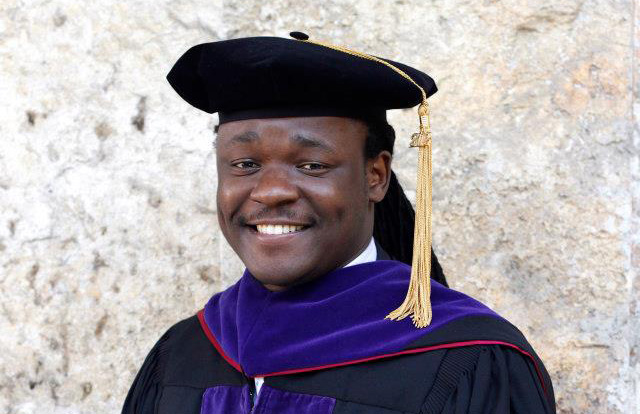Delimitation refers to redistricting of electoral maps. It accounts for changes in population demographics to achieve equal representation in single member districts. In countries like the United States, it is a hot-button issue because it is mainly done by legislative majorities in service of plurality/first past the post systems. These are winner-take-all elections in which all votes for losing candidates amount to wasted votes. They have no effect on incumbency. This makes redistricting particularly salient as electoral minorities can create voting boundaries which ensure long-term incumbency without mastering the support of popular majorities. This is the practice known as partisan gerrymandering.
Zimbabwe employs a winner-take-all system for the presidential election. Since the president is elected nation-wide, delimitation is of no consequence to the highest office. The directly-elected seats in the National Assembly and local authorities are vulnerable to gerrymandering. However, the votes cast for losing candidates in these elections are not entirely wasted. Through a system of proportional representation, they are used to compute the quota allocation of senators, women and youth parliamentarians, as well as provincial councillors. In this way, Dr. Thokozani Khupe secured two proportional representation seats in 2018 in spite of her poor return in the direct elections. Gerrymandering remains a danger to democracy, but the constitution reduces its effect through hybridity of the electoral system.
A partisan gerrymander is unfair because the electoral maps concerned lack partisan symmetry. Partisan symmetry requires that the vote total in a district must translate to the same number of seats no matter which party secures such total. Thus, if party A secures fewer seats than part B from the same total number of votes, then it is the victim of a partisan gerrymander. Another way of showing a partisan gerrymander is using the efficiency gap which divides the total number of wasted votes by the total number of votes cast. An efficiency gap of over 7% or below -7% was established by University of Chicago Professors as empirical evidence of gerrymandering.
It is obviously premature to make a claim of gerrymandering from the preliminary delimitation report. That would require the election results. Commentators are slow to make this admission, instead making claims of ‘smart’ or ‘subtle’ gerrymandering. Dr. Phillan Zamchiya’s great piece shows that there has been some redistricting which works in the opposition’s favour (ZEC has not bothered to create a significant number of new constituencies in areas where ZANU PF has a chance to win) and some which ZANU PF would commend (In ZANU PF’s perceived areas of electoral dominance there has been little reconfiguration of constituencies). A non-partisan process would produce such variegated results, eliciting both discontent and delight across the political divide. It cannot point to gerrymandering, as that would require the actual election results.
Thus, ahead of the electoral outcome, there is less focus on the contents of the report, and more scrutiny of whether a constitutional infringement could render the entire process nugatory. The relevant part of the Constitution provides as follows:
…the Commission may depart from the requirement that constituencies and wards must have equal numbers of voters, but no constituency or ward of [a] local authority may have more than twenty per cent more or fewer registered voters than the other such constituencies or wards.
The Lancaster House Constitution, as amended, provided as follows:
the..Commission … may depart from the requirements of subsection (4) [equal representation] , but in no case to any greater extent than twenty per centum more or less than the average number of registered voters in House of Assembly constituencies.
The argument is that these two provisions are not the same. Whilst the former Constitution allowed a 20% variation, it is only a 10% variation above or below the average which would meet the current Constitution’s limit of 20%. This cannot be correct. The Constitution can only be amended in express terms – never by implication ( 52(1) of former Constitution and 328(2) of current Constitution). If COPAC sought to change the import of this provision, it would have stated in clear and unambiguous terms that 20% is now a reference to total variation, whether above or below, the constituency/ward average.
Instead, the wording of the former constitution is retained almost in toto. Those questioning ZEC’s approach do not dispute, indeed they confirm, that the former Constitution allowed for variation of 20% above or below the average. This is relevant since the wording of the former and current constitutions is almost identical. It diverges only by omission of the phrase ‘average number’ and replacement of less than with fewer than. The current Constitution is also broader as it includes local authority wards for the same variation. Notwithstanding these incidental differences, the actual percentage for variation is precisely the same. 20 percent more or less than the average in the former Constitution, and 20 percent more or fewer than other constituencies and wards in the current Constitution. This cannot amount to an amendment of the percentage variation, let alone one that is in express terms. It is eminently a case of constitutional continuities. To this extent, the approach by ZEC is unimpeachable.
Redistricting is not done by partisan legislators in Zimbabwe. It is conducted by an independent constitutional commission led by a judge or someone qualified for judicial appointment. The independence of ZEC and that of its chairperson are important institutional safeguards, the latter of which ensures legal interpretation is internally subject to judicial supervision. These measures insulate ZEC, and the elections it conducts, from partisan manipulation. Whilst the elected branches can refer the delimitation report back to ZEC, its subsequent decision is final. When viewed in light of the system of proportional representation and its effect on wasted votes, these important features should serve to increase public trust in the electoral system broadly and inspire more people to participate at the polls. Yet the perpetual paradox of political commentary lay in consistent condemnation of the same system we hope that people will, somehow, believe in with sufficient confidence as to register to vote en masse.








